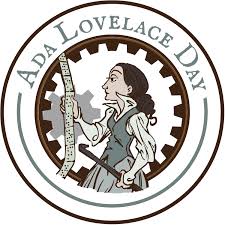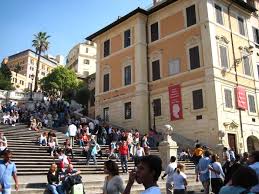10 October 2017 (Rome, Italy) – Ada Lovelace Day is an international celebration day of the achievements of women in science, technology, engineering and maths (STEM). It aims to increase the profile of women in STEM and, in doing so, create new role models who will encourage more girls into STEM careers and support women already working in STEM.
It was founded in 2009 by Suw Charman-Anderson, and is held every year on the second Tuesday of October. There are events around the world. If you live in London or have the chance to be in London, the flagship event is the Ada Lovelace Day Live! “science cabaret” event at which women in STEM give short talks about their work or about other women who have inspired them, or perform short comedy or musical interludes with a STEM focus. This year’s event is being held at the Royal Institution.
Augusta Ada King-Noel, Countess of Lovelace was an English mathematician and writer, chiefly known for her work on Charles Babbage’s proposed mechanical general-purpose computer, the Analytical Engine. She was the only legitimate child of the poet Lord Byron, a friend and contemporary of the poets John Keats and Percy Bysshe Shelley. Being in Rome I was drawn today to the Keats–Shelley Memorial House museum just below the Spanish Steps:
Byron spent a fair amount of time in Rome and Venice and often visited with Shelley. In fact, Byron had a block of rooms in the building just across from the Keats–Shelley Memorial House.
Two years ago at London’s Science Museum there was an enormous Ada Lovelace exhibit and lecture event, much of the exhibit now made a permanent part of the museum’s “Information Age” wing. When I attended I had the opportunity to buy a copy of the partial diaries and letters of Charles Babbage and Ada Lovelace. My wife subsequently bought me an (almost) complete downloadable set via the British Library. I perused it today and continue to be awestruck. May all men remember to be great, magnanimous and ethical like Charles Babbage. From a letter dated 9 September 1843, Charles Babbage to Michael Faraday, publicly crediting Ada’s brilliance:
So that Enchantress who has thrown her magical spell around the most abstract of Sciences and has grasped it with a force which few masculine intellects (in our country at least) could have exerted over it.
Ada’s vision for machine intelligence is simply genius:
Mathematical science shows what is. It is the language of unseen relations between things. But to use and apply that language, we must be able fully to appreciate, to feel, to seize the unseen, the unconscious.
Secondly, figures, the symbols of numerical magnitude, are frequently also the symbols of operations, as when they are the indices of powers. Wherever terms have a shifting meaning, independent sets of considerations are liable to become complicated together, and reasoning and results are frequently falsified.
The intellectual, the moral, the religious seem to me all naturally bound up and interlinked together in one great and harmonious whole.
She, like Da Vinci, saw and knew the hidden things that Plato said only a select few do.
So, in their wake, we invent the future.

